Piper airplanes are a renowned line of aircraft designed for versatility and performance. These airplanes appeal to pilots seeking reliability and efficiency in various models. The Piper Cub stands out as a representation of the brand's legacy in aviation history. Piper airplanes exhibit strong connections to the preferences of pilots and the demands of modern aircraft operations. Explore the defining characteristics like models, pilots, Cub variants, and overall aircraft design. Buy a Piper airplane to experience its engineering excellence and enduring value firsthand.
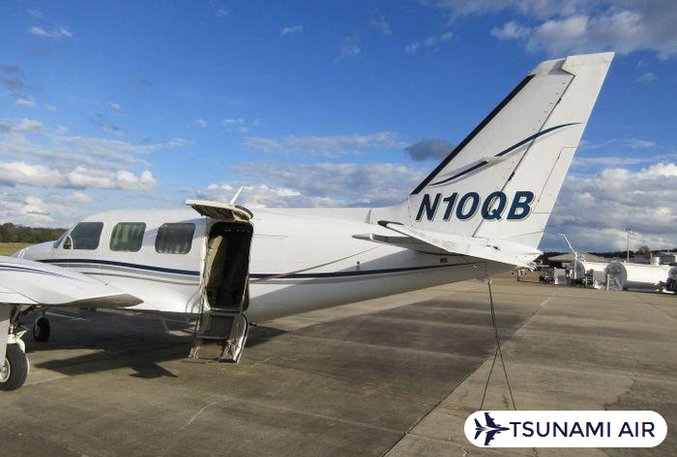
USD $189,950
Twin EngineReg Number
N10QB
Total Time
9033 hrs
Location
United States
Year
1978
Seller: Select Aviation Services LLC
Phone: (601) 941-5800
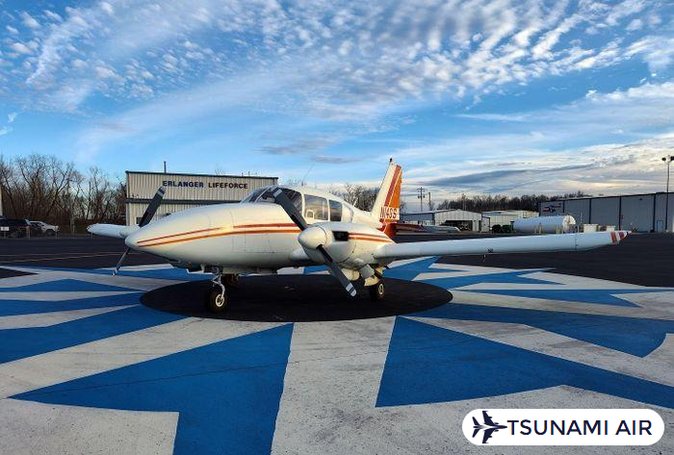
USD $139,500
Twin EngineReg Number
N14GS
Total Time
N/A hrs
Location
United States
Year
N/A
Seller: Kevin Alderman
Phone: (239) 896-7576
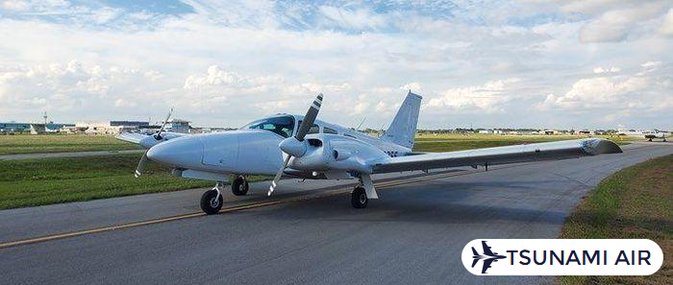
USD $179,500
Twin EngineReg Number
N56755
Total Time
12172 hrs
Location
United States
Year
1973
Seller: N/A
Phone: (754) 234-9993
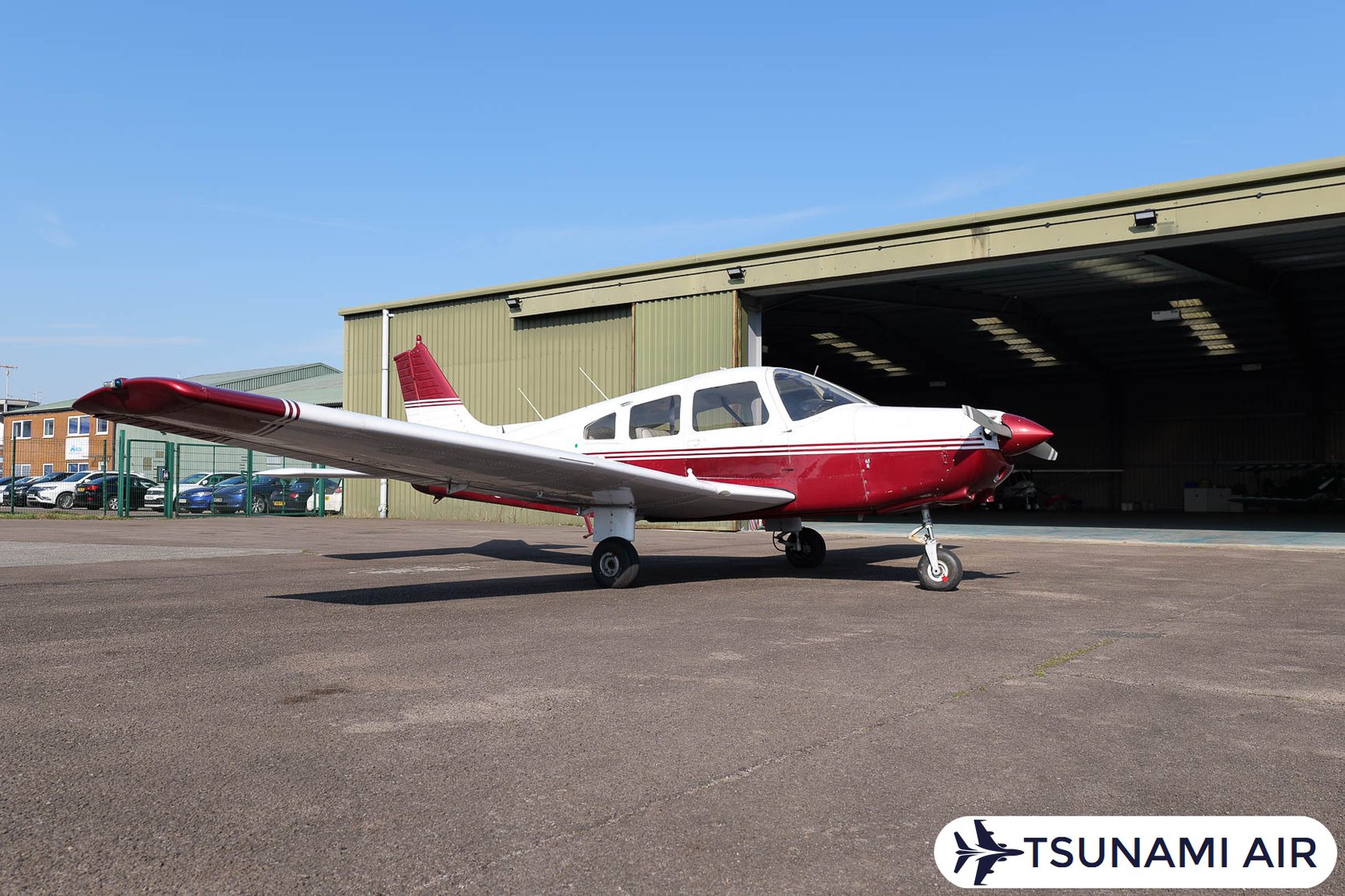
USD $70,000.00
Single EngineReg Number
G-CJLI
Total Time
10500 hrs
Location
United Kingdom
Year
1982
Seller: AT Aviation
Phone: +441404642006
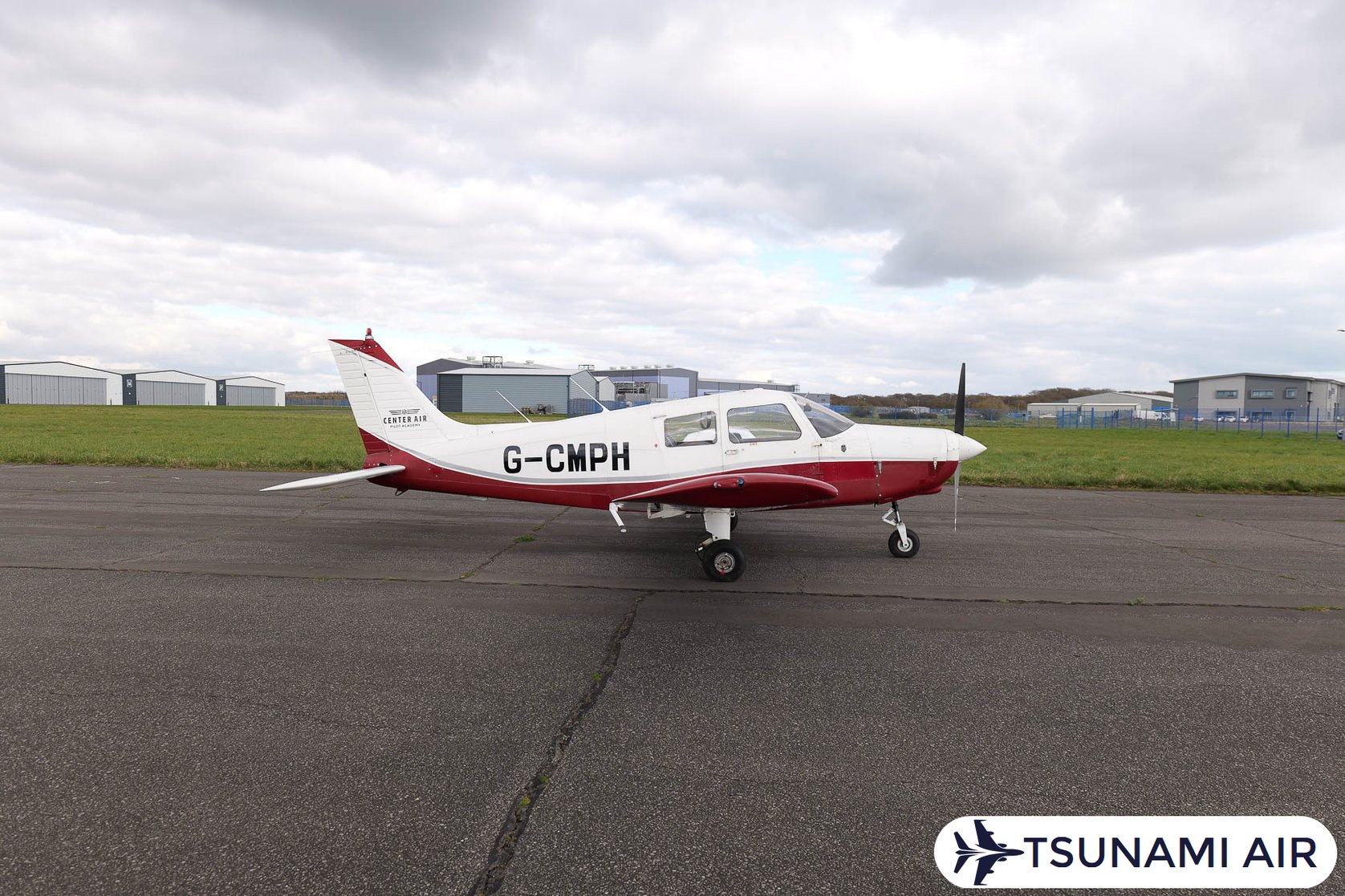
USD $59,950.00
Single EngineReg Number
G-CMPH
Total Time
14825 hrs
Location
United Kingdom
Year
1989
Seller: AT Aviation
Phone: +441404642006
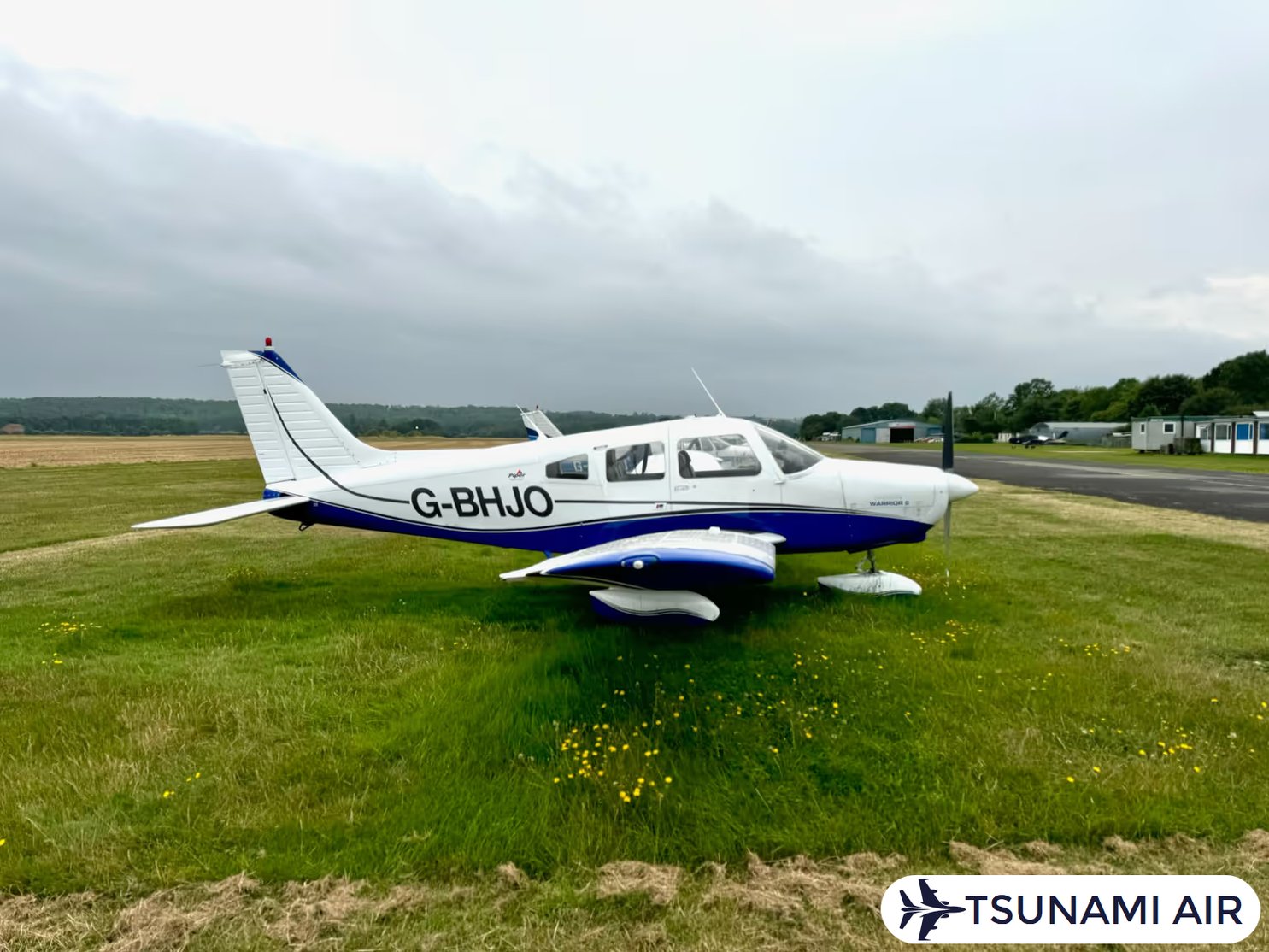
USD $75,000.00
Single EngineReg Number
G-BHJO
Total Time
10985 hrs
Location
United Kingdom
Year
1977
Seller: AT Aviation
Phone: +441404642006

USD $150,000.00
Single EngineReg Number
G-SBOY
Total Time
5615 hrs
Location
United Kingdom
Year
1998
Seller: AT Aviation
Phone: +441404642006
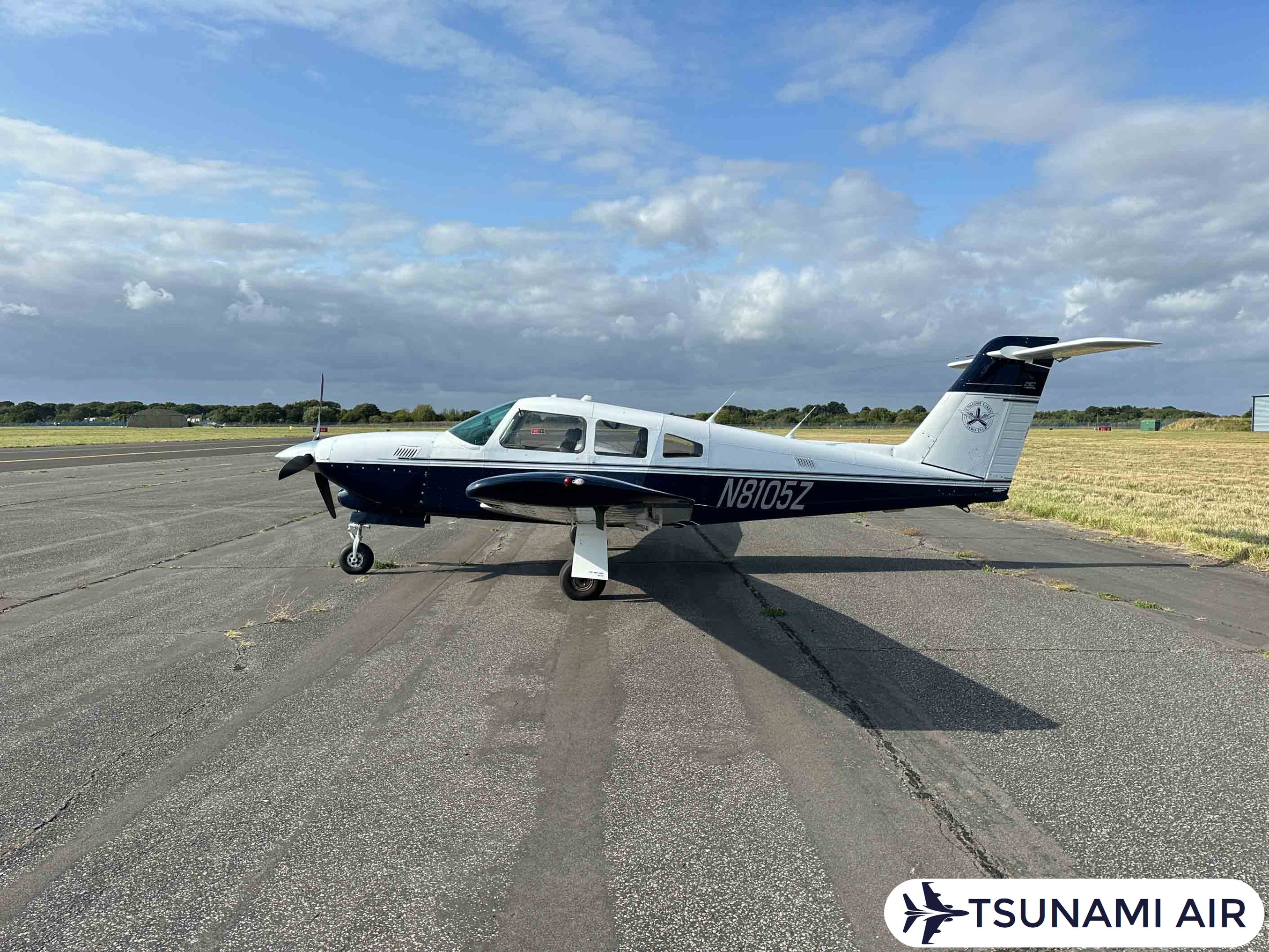
USD $90,000.00
Single EngineReg Number
N8105Z
Total Time
3785 hrs
Location
United Kingdom
Year
1979
Seller: AT Aviation
Phone: +441404642006
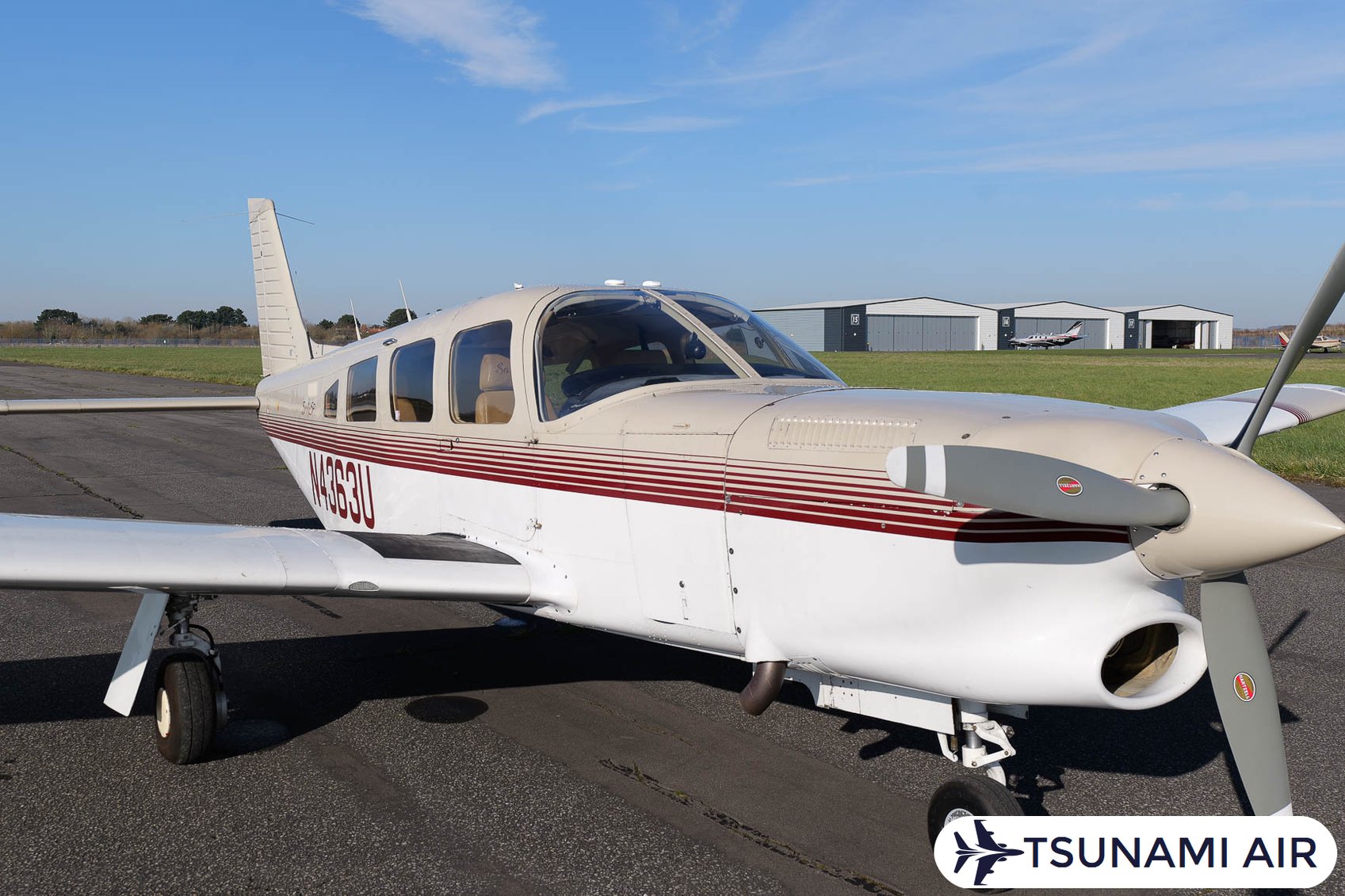
USD $205,000.00
Single EngineReg Number
N4363U
Total Time
4400 hrs
Location
United Kingdom
Year
1984
Seller: AT Aviation
Phone: +441404642006
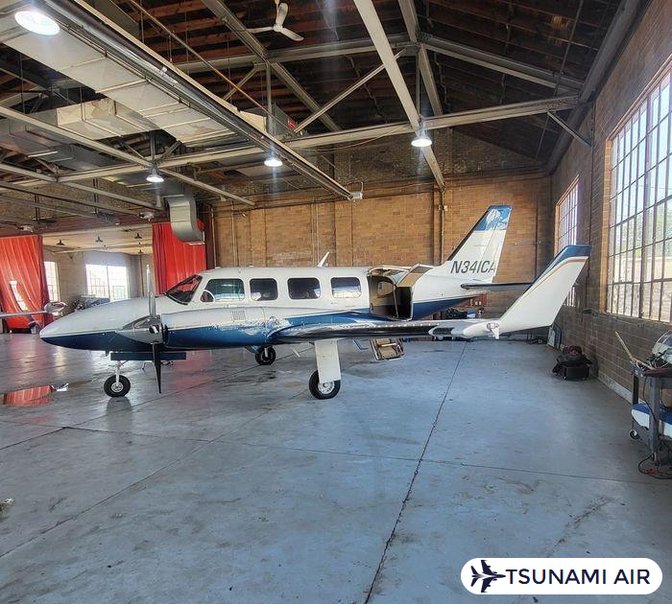
USD $249,000
Twin EngineReg Number
N341CA
Total Time
12920 hrs
Location
United States
Year
1979
Seller: N/A
Phone: (309) 453-7351
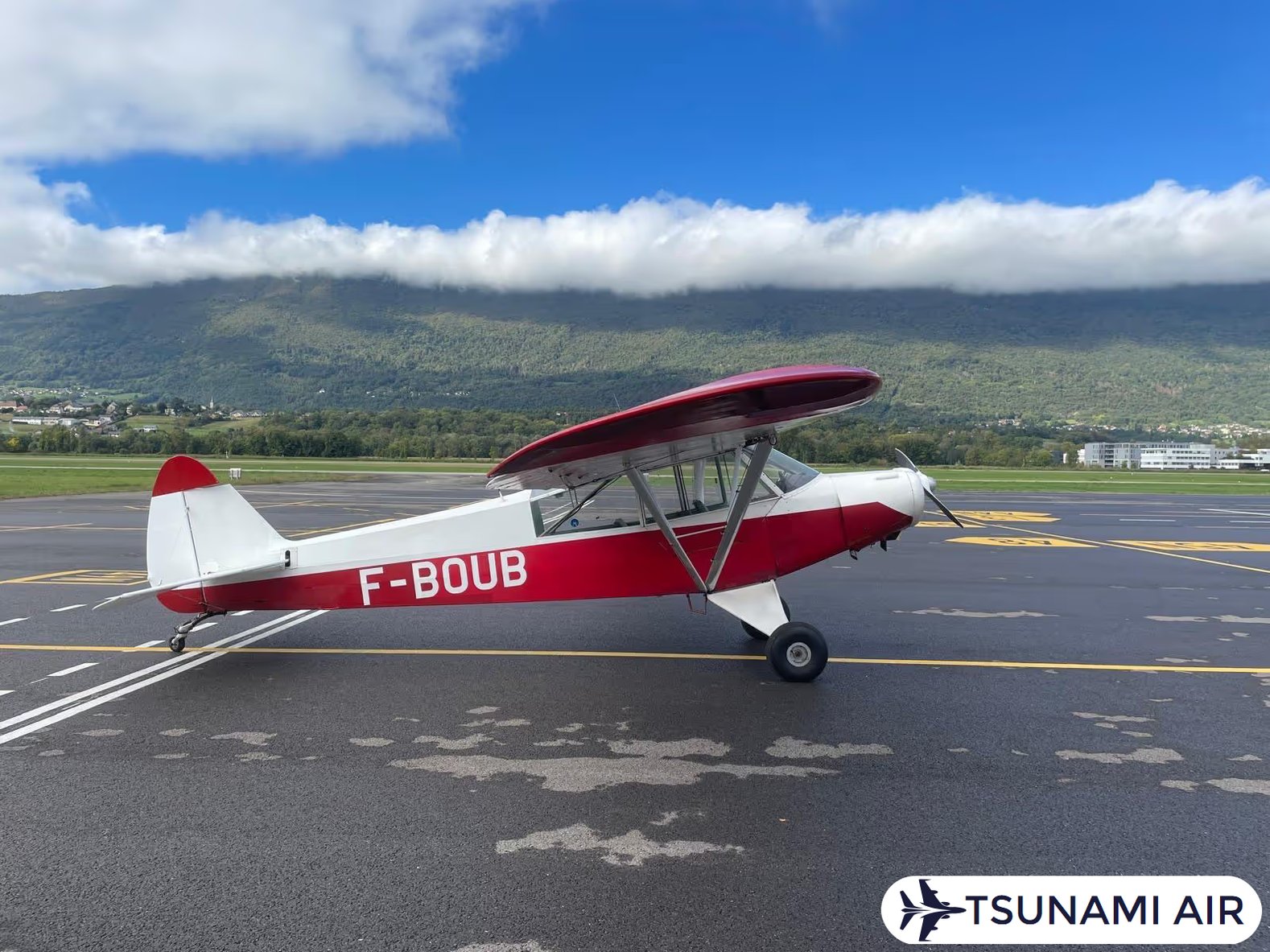
USD $65,000.00
Single EngineReg Number
F-BOUB
Total Time
3945 hrs
Location
United Kingdom
Year
1951
Seller: AT Aviation
Phone: +441404642006
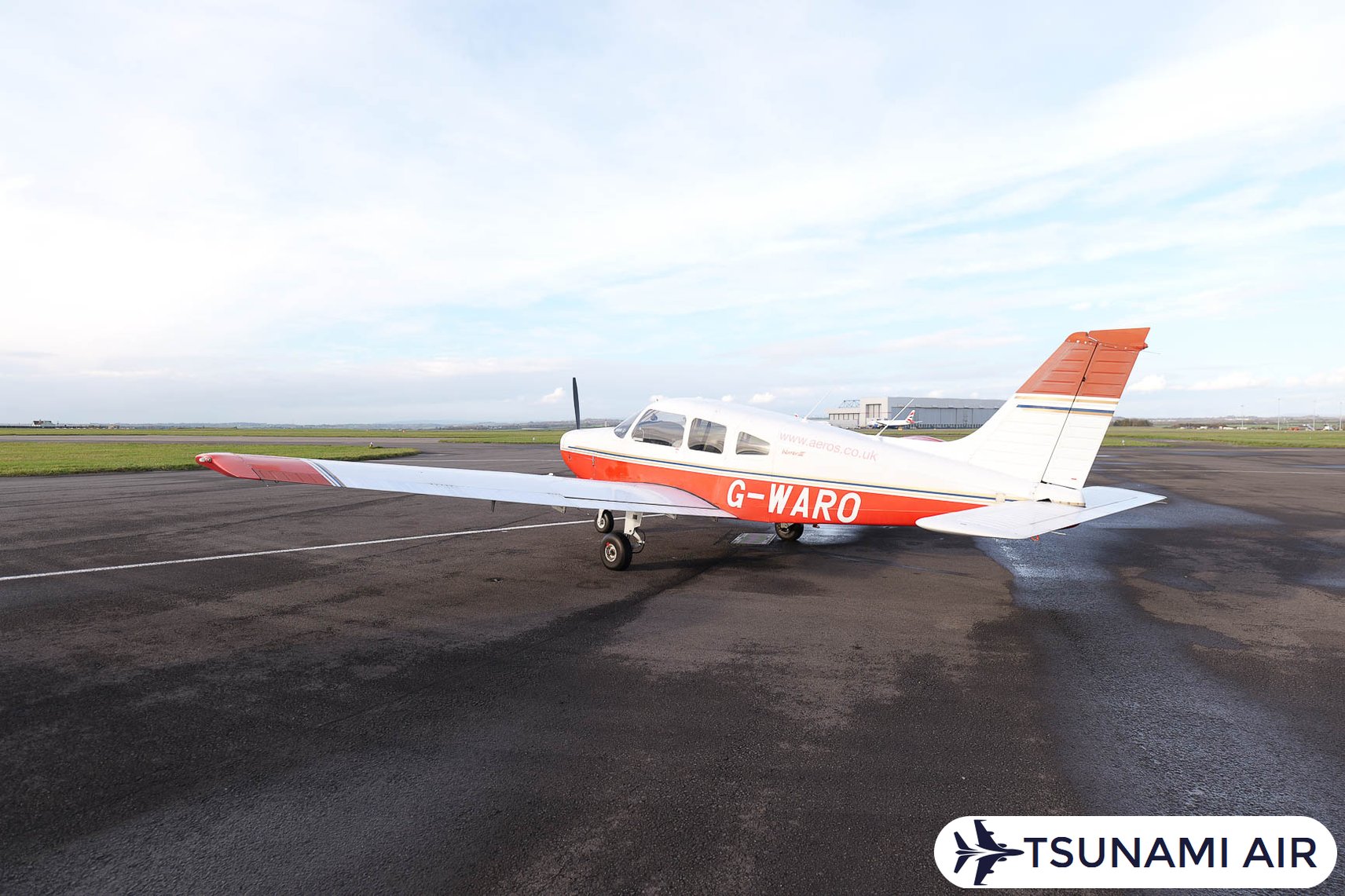
USD $65,000.00
Single EngineReg Number
G-WARO
Total Time
11814 hrs
Location
United Kingdom
Year
1997
Seller: AT Aviation
Phone: +441404642006
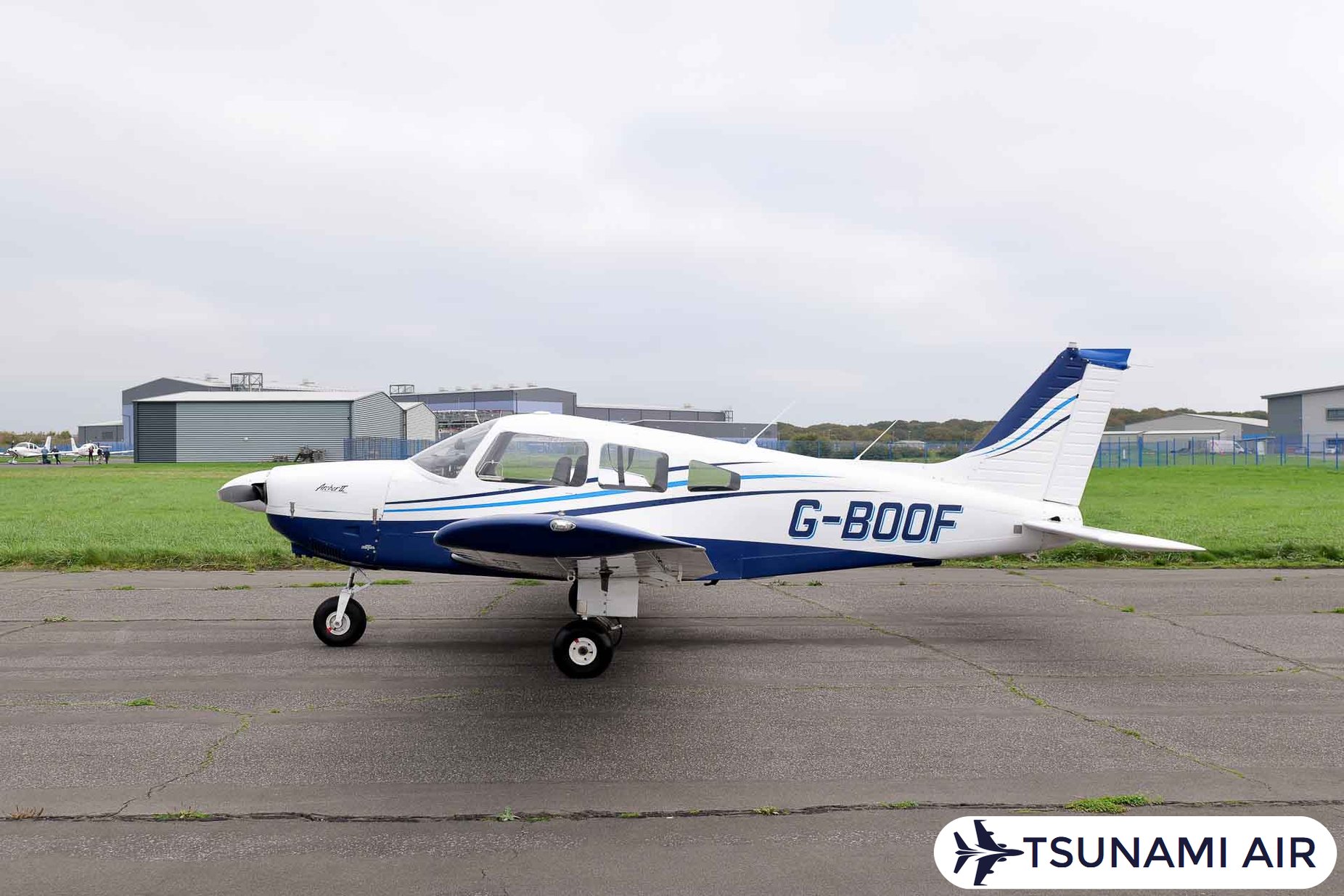
USD $79,995.00
Single EngineReg Number
G-BOOF
Total Time
13022 hrs
Location
United Kingdom
Year
1978
Seller: AT Aviation
Phone: +441404642006
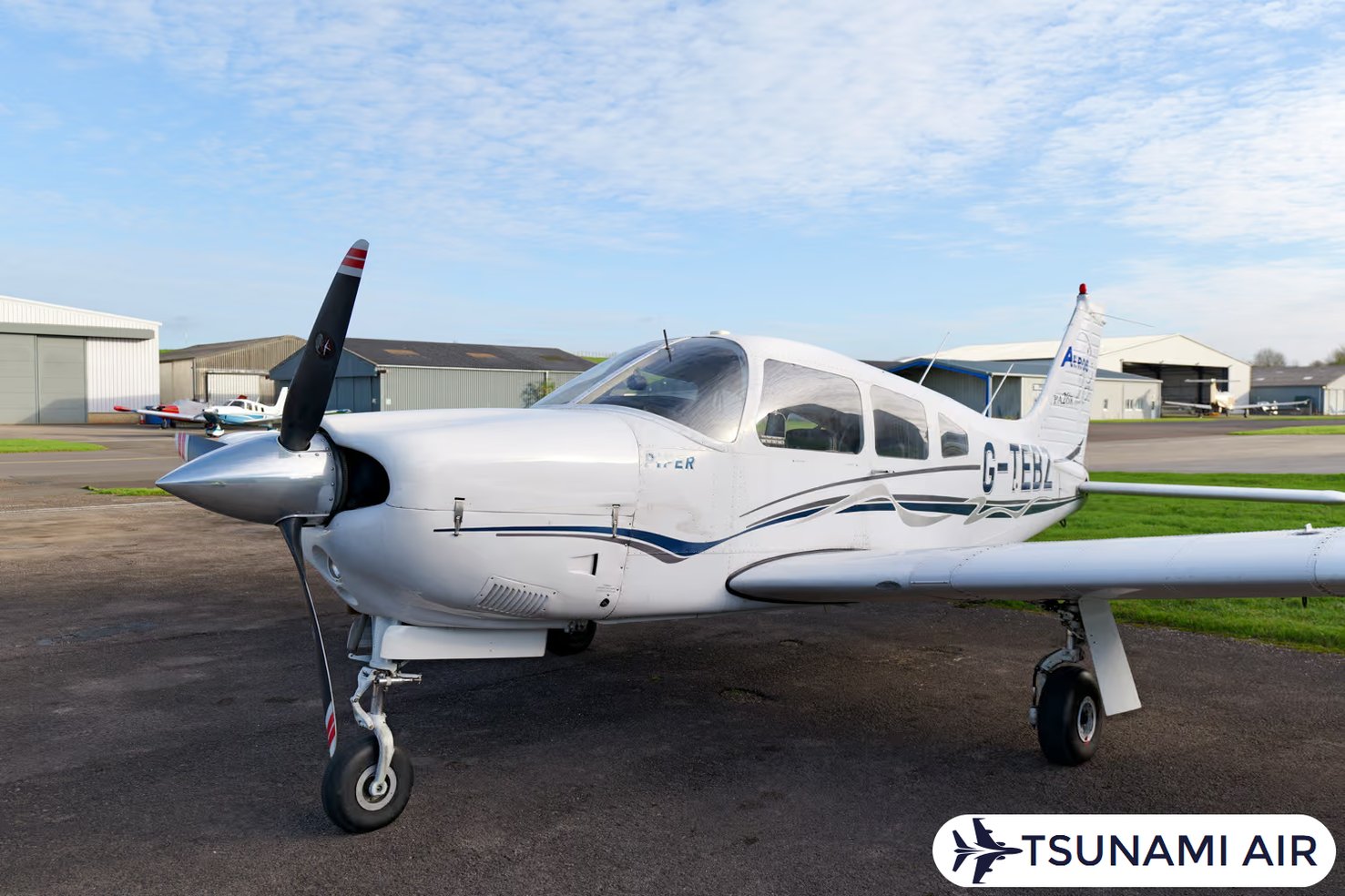
USD $85,000.00
Single EngineReg Number
G-TEBZ
Total Time
9962 hrs
Location
United Kingdom
Year
1977
Seller: AT Aviation
Phone: +441404642006

USD $175,000.00
Single EngineReg Number
G-VALL
Total Time
sub 3000 Hours TT since new hrs
Location
United Kingdom
Year
1978
Seller: AT Aviation
Phone: +441404642006
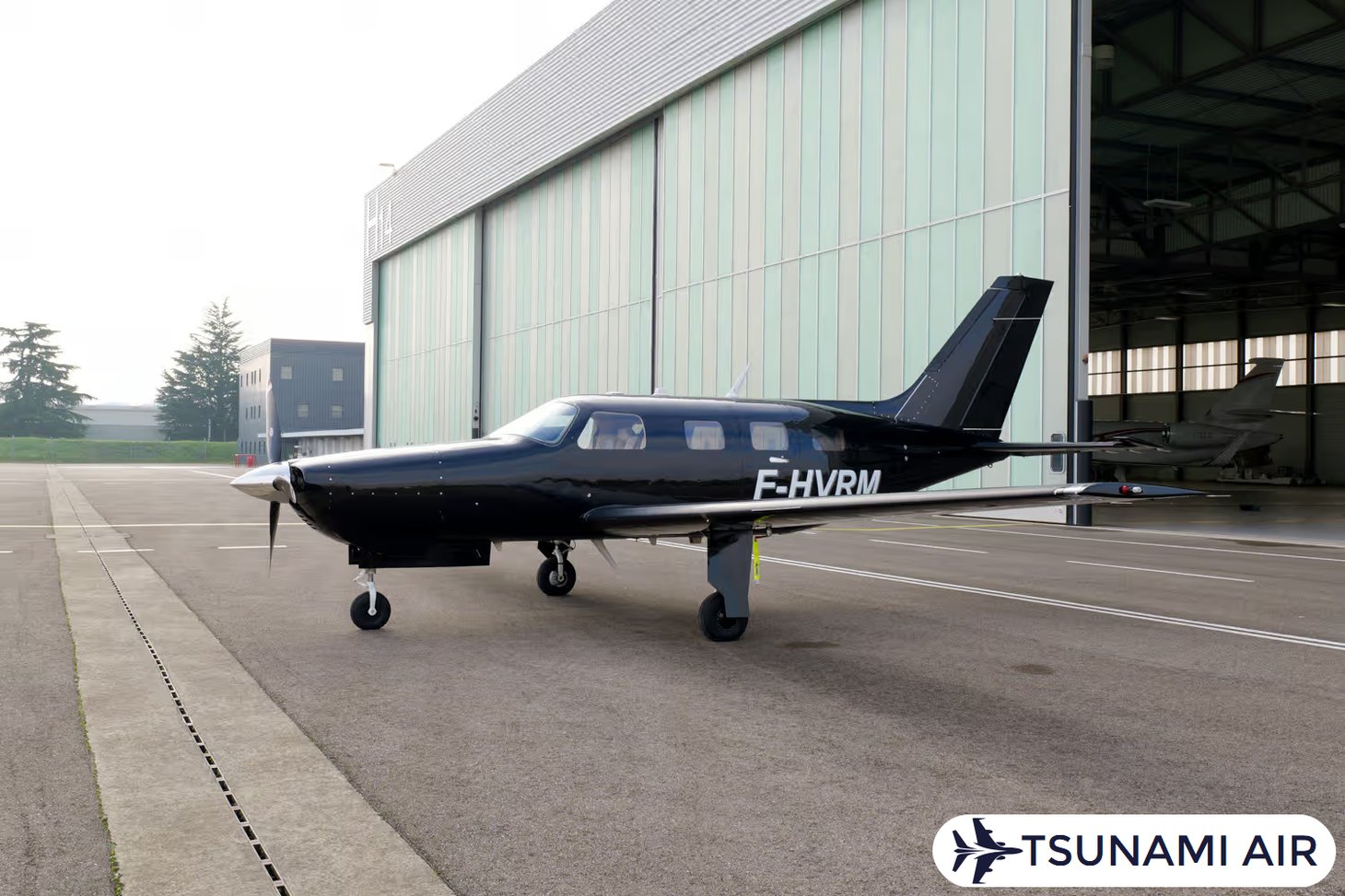
USD $750,000.00
Single EngineReg Number
F-HVRM
Total Time
1565 hrs
Location
United Kingdom
Year
2006
Seller: AT Aviation
Phone: +441404642006
Piper aircraft brand is a prominent aircraft manufacturer located at the Vero Beach Regional Airport in Vero Beach, Florida, United States, producing general aviation aircraft since 1927.
Piper Aircraft, Inc. corporation maintains a strong brand identity through its logo which symbolizes decades of innovation and engineering excellence. The logo reflects the company's dedication to advancing aviation technology while honoring its rich history in the industry. Piper aircraft have consistently set benchmarks in general aviation by producing reliable and versatile airplanes suited for personal, business, and training purposes. The PA-28 Cherokee design focuses on simplicity, durability, and functionality, making it a popular choice for both flight training and personal use.
Piper aircraft legacy is deeply rooted in its long-standing reputation for quality, safety, and contributions to aviation since 1927. William T. Piper founded the company officially in 1937, building on the heritage of the Taylor Brothers Aircraft Manufacturing Company established in 1927. Piper J-3 Cub heritage serves as a cornerstone of the brand’s history, with the J-3 Cub epitomizing affordability and accessibility in flying. Over 144,000 aircraft have been manufactured across 160 certified models, showcasing the company’s influence as a leading manufacturer.
The piper aircraft company remains instrumental in defining the future of flight with its global impact on general aviation. Piper Aircraft, Inc. innovation drives continuous evolution, incorporating advanced technology into designs while maintaining simplicity and reliability. The PA-32 Cherokee Six capacity makes it ideal for larger groups and cargo, while the Piper Malibu Mirage sophistication appeals to those seeking cutting-edge technology and luxury. Piper Arrow speed and performance deliver exceptional agility, aided by retractable landing gear and robust engines.
Piper aircraft manufacturers contribute to the aviation sector, meeting diverse needs of pilots worldwide. The PA-28 Cherokee versatility allows adaptation to various flying requirements, ranging between 408 and 703 nautical miles with cruising speeds of 108-136 knots. Piper Malibu Mirage technology ensures seamless navigation and operational ease, redefining comfort in single-engine aircraft. Piper aircraft were pivotal in military pilot training during World War II, with the L-4 Grasshopper variant representing the military version of the J-3 Cub.
Piper manufactures different types of planes including Business, Personal, and Trainer models. The lineup features the M700 Fury, M500, M350, Archer LX/DLX, and Seminole, powered by Lycoming engines.
The types of planes that Piper manufactures are listed below.
Piper Aircraft produces light aircraft designed for general aviation purposes. The PA-28 Cherokee series, a popular Piper aircraft light aircraft model, serves extensively in training and personal flying roles. Flight schools utilize the PA-28 Cherokee due to its advanced flight characteristics, low operating costs, and reliable Lycoming piston engines. The PA-28 Cherokee features a low-wing design, tricycle landing gear, and seating for four people. Private owners favor the PA-28 Cherokee for its simplicity and stability during flight operations.
Single-engine piston aircraft form a part of Piper’s lineup, including models like the PA-28 Cherokee and PA-32 Cherokee Six. The PA-32 Cherokee Six, a six-seat utility aircraft, offers versatility for family travel and small group transport. Equipped with a Lycoming piston engine producing around 300 horsepower, the PA-32 Cherokee Six provides a spacious cabin and reliable performance. Both models highlight Piper Aircraft’s commitment to producing single-engine aircraft suited for training, personal use, and utility roles within general aviation.
Twin-engine aircraft like the PA-44 Seminole and PA-31 Navajo cater to advanced training and utility needs. The PA-44 Seminole, a multi-engine trainer, enhances pilot skills by simplifying engine-out handling and offering predictable flight characteristics. Advanced pilot training programs utilize the PA-44 Seminole for commercial and multi-engine pilot certificate preparation. The PA-31 Navajo, a twin-engine utility aircraft, serves air taxi services and light cargo transport. Cost-effectiveness and versatility define the PA-31 Navajo’s influence in both business and private operations.
Pressurized and high-performance aircraft like the Malibu Mirage represent Piper Aircraft’s innovation in general aviation. The Malibu Mirage, a pressurized aircraft, combines efficiency, comfort, and power for faster and more comfortable travel. Private pilots seeking high-performance capabilities favor the Malibu Mirage for its advanced features and ability to handle diverse weather conditions. Piper Aircraft continues to integrate cutting-edge technology into its fleet, guaranteeing its models meet the demands of modern aviation enthusiasts and professionals alike.
Piper plane models include the PA-28 Cherokee, PA-31 Navajo, PA-34 Seneca, PA-46 Malibu and Mirage, M500 and M350, Aerostar, and Seminole. These single-engine and twin-engine aircraft cater to personal flying, business, and training purposes.
The Piper plane models are given in the table below.
Model | Type | Engine | Seating Capacity | Key Features |
Piper Cub | Single-engine | Piston | 2 | High-wing, tail-wheel, ideal for bush flying |
PA-28 Cherokee (e.g., Warrior, Archer) | Single-engine | Piston | 4 | Low-wing, variants include retractable gear |
PA-32 Cherokee Six | Single-engine | Piston | 6 | Expanded seating from PA-28 series |
PA-46 Malibu/Mirage | Single-engine | Turbocharged/piston | 6 | Pressurized cabin and high-altitude performance |
PA-46 M600 | Single-engine | Turboprop | 6 | Enhanced speed & efficiency |
PA-24 Comanche | Single-engine | Piston | 4-6 | High-performance design |
PA-23 Apache | Twin-engine | Piston | 5-6 | Rugged utility |
PA-34 Seneca | Twin-engine | Piston | 6 | Light twin for training |
PA-44 Seminole | Twin-engine | Piston | 4 | Multi-engine trainer |
PA-31 Navajo | Twin-engine | Piston/Turboprop | 6-10 | Light transport, charter missions |
PA-31T Cheyenne | Twin-engine | Turboprop | 6-8 | Pressurized cabin |
PA-20 Pacer | Single-engine | Piston | 4 | Tailwheel config |
PA-22 Tri-Pacer | Single-engine | Piston | 4 | Tricycle landing gear |
PA-30 Twin | Twin-engine | Piston | 4-6 | Counter-rotating propellers |
PA-38 Tomahawk | Single-engine | Piston | 2 | Flight training |
Piper Sport | Light Sport Aircraft | Piston | 2 | Lightweight, enthusiast-focused |
The Piper Cub, PA-28 Cherokee, and PA-32 Cherokee Six represent foundational models in Piper Aircraft's lineup. The Piper Cub features a high-wing design with a tailwheel configuration, ideal for bush flying and basic training. The PA-28 Cherokee includes variants like the Cherokee Warrior and Cherokee Archer, known for their low-wing configurations and seating capacities of four. These aircraft serve as primary trainers and personal flying platforms. The PA-32 Cherokee Six expands on the Cherokee series with a six-seat configuration, catering to larger groups or utility missions. The PA-28R variant introduces retractable landing gear, bettering performance for advanced pilots.
Twin-engine Piper models like the PA-23 Apache, PA-34 Seneca, PA-44 Seminole, and PA-31 Navajo excel in utility, multi-engine training, and light transport roles. The PA-23 Apache operates as a rugged twin-engine utility aircraft. The PA-34 Seneca serves as a light twin aircraft used for training and personal flying. The PA-44 Seminole functions as a twin-engine trainer for multi-engine certification courses. The PA-31 Navajo provides a robust platform for light transport and charter operations, while the PA-31T Cheyenne enhances performance with a pressurized cabin.
High-performance models like the PA-46 Malibu and its derivatives highlight Piper Aircraft's advancements. The PA-46 Malibu Mirage features a pressurized cabin and a turbocharged engine, achieving higher altitude performance. The PA-46 M600 introduces a turboprop engine for refined efficiency and speed. The PA-24 Comanche stands out with its single-engine, high-performance design, appealing to advanced pilots seeking speed and reliability.
Piper aircraft demonstrate versatility across applications, from personal and recreational flying to expert training and business transport. Models like the PA-20 Pacer and PA-22 Tri-Pacer cater to practical needs with tailwheel and tricycle configurations. The PA-30 Twin Comanche offers counter-rotating propellers for refined stability. The PA-38 Tomahawk focuses on flight training, while the Piper Sport targets light sport aviation enthusiasts. Each model fulfills specific mission requirements, allowing adaptability for diverse aviation sectors.
The specifications of the Piper planes include a wingspan of 30 ft (9.14 m), length of 23.3 ft (7.1 m), and height of 7.3 ft (2.23 m). Piper Cherokee variants feature Lycoming engines with 180 horsepower (134.2 kW), max cruise speeds up to 148 KCAS (238.2 kph), and stall speeds around 121 KCAS (194.7 kph). Piper Archer LX models include the Garmin G1000 avionics suite.
The specifications of the Piper planes are given in the table below.
Model | Engine | Power (hp/kW) | Cruise Speed (kt) | Stall Speed (kt) | Range (nmi) | Capacity (Passengers) | Wingspan (ft/m) |
Piper Cherokee | Lycoming | 180 / 134.2 | 148 | 121 | N/A | 4 | 35 / 10.67 |
Piper Archer LX | Lycoming | 180 / 134.2 | 129 | N/A | N/A | 4 | 35 / 10.67 |
Piper Cub | Continental A-65 | 65-75 / 48.5-55.9 | 65-75 | N/A | 190-240 | 2 | 35 / 10.67 |
Piper Warrior | Lycoming O-320-E2A | 160 / 119.3 | 123 | N/A | 500 | 4 | 35 / 10.67 |
Piper Arrow | Lycoming IO-360-B1E | 180 / 134.2 | 140 | N/A | 500 | 4 | 35 / 10.67 |
Piper Seneca | Two Lycoming IO-360-C1E6 | 2 x 200 / 149.1 | 195 | N/A | 883 | 6 | 38 ft 11 in (11.86 m) / 11.86 m (38 ft 11 in) |
Piper Malibu | Continental TSIO-520-BE | 310 / 231.3 | 203 | N/A | 1,463 | 6 | 43 / 13.1056 |
Piper Meridian | Pratt & Whitney PT6A-42A | 500 / 372.8 | 260 | N/A | 1,000 | 6 | 43 / 13.1056 |
The Piper Cub engine is a Continental A-65, generating 65-75 hp of power. The Piper Cub cruise speed averages 65-75 knots, with a range of 190-240 nautical miles. The aircraft accommodates 2 passengers, and the wingspan measures 35 feet (10.67 meters). The Piper Warrior engine is a Lycoming O-320-E2A, producing 160 hp of power. The Piper Warrior cruise speed reaches 123 knots, with a range extending to 500 nautical miles. The aircraft holds 4 passengers, and the wingspan spans 35 feet (10.67 meters). The Piper Arrow engine, a Lycoming IO-360-B1E, delivers 180 hp of power. The Piper Arrow cruise speed achieves 140 knots, with a similar range of 500 nautical miles. The Piper Arrow accommodates 4 passengers, and the wingspan measures 35 feet (10.67 meters). Retractable landing gear in the Arrow enhances its performance for higher speeds.
The Piper Seneca engine consists of two Lycoming IO-360-C1E6 or Continental TSIO-360 engines, each producing 200 hp of power. The Piper Seneca cruise speed averages 195 knots, with a range of 883 nautical miles. The Piper Seneca accommodates 6 passengers, and the wingspan measures 38 feet 11 inches (11.86 meters). High-performance single-engine aircraft include the Piper Malibu and Meridian. The Piper Malibu engine is a Continental TSIO-520-BE, generating 310 hp of power. The Piper Malibu cruise speed reaches 203 knots, with a range extending to 1,463 nautical miles. The aircraft accommodates 6 passengers, and the wingspan measures 43 feet (13.1056 meters). The Piper Meridian engine is a Pratt & Whitney PT6A-42A, delivering 500 hp of power. The Piper Meridian cruise speed achieves 260 knots, with a range of 1,000 nautical miles. The aircraft accommodates 6 passengers, and the wingspan measures 43 feet (13.1056 meters).
The Piper Cherokee wingspan spans 35 feet (10.67 meters), aiding its stable flight characteristics. The Piper Archer wingspan measures 35 feet (10.67 meters), boosting its versatility for training and personal use. Larger models like the Piper Seneca wingspan at 38 feet 11 inches (11.86 meters) provide better lift for heavier payloads. Passenger capacity ranges from 2 seats in the Piper Cub to 6 seats in the Piper Seneca, Malibu, and Meridian. Range varies, with the Piper Cub range limited to 190-240 nautical miles, while the Piper Malibu range extends up to 1,463 nautical miles.
Engines that power Piper planes include Lycoming, Continental, and Pratt & Whitney engines, with options like the turbocharged Lycoming TIO-540-A and turboprop Pratt & Whitney PT6A series offering horsepower and efficiency.
Lycoming engines’ piston engine series power a portion of Piper aircraft. The Lycoming O-360, IO-540, and TIO-540 models generate horsepower ranging from 150 hp to 310 hp, allowing reliable performance for personal and trainer aircraft classes. Continental motors piston engine options, like the CD-155 diesel engine, produce 155 horsepower for fuel-efficient training operations in models like the Archer DX. Continental motors’ engine performance emphasizes efficiency in diesel-equipped trainer planes.
Rotax light-sport engine installations highlight fuel efficiency and modern design principles. Rotax engines suit smaller Piper aircraft focused on economy and ease of operation within the light-sport segment. Pratt & Whitney turboprop engine applications dominate higher-performance models. The PT6A-52 engine generates 700 shaft horsepower for the M700 Fury, while the PT6A-42A engine delivers 500 horsepower for the M500. Pratt & Whitney radial engine designs contributed to aviation advancements, but modern Piper aircraft favor horizontally opposed piston or turboprop configurations.
Pratt & Whitney PT6A series engines combine turbine power with propeller thrust to enhance performance and efficiency. The PT6A-66D engine in the M600/SLS variant produces 600 horsepower, demonstrating adaptability across demanding Piper aircraft models. Piper aircraft engine choices reflect customization based on mission profiles, contemplating factors like power output, fuel efficiency, range, and operational costs. Piper aircraft engine installation ensures optimal integration of diverse engines customized for specific roles, aligning with each aircraft's intended use.
Piper planes' fuel efficiency depends on specific aircraft and operational conditions. Single-engine models like the Archer series show varying fuel burn rates, while the Piper PA44 Seminole achieves 12.2 nautical miles per gallon. Fuel economy of Piper planes reflects model characteristics and performance priorities.
Fuel efficiency in aviation measures consumption per mile, hour, or passenger, focusing on cost savings and environmental impact. Piper Archer fuel efficiency achieves 7-9 gallons (26.5-34.1 liters) per hour at cruise, making it competitive among single-engine trainers. Piper PA-32 Saratoga fuel burn rate ranges from 12-17 gallons (45.4-64.4 liters) per hour, reflecting its higher performance capabilities. Piper PA-28 Cherokee engine efficiency ensures reliable operation with moderate fuel consumption, burning 7-12 gallons (26.5-45.4 liters) per hour.
Piper Archer operational cost includes maintenance, insurance, and fuel consumption, with good fuel efficiency compared to other single-engine trainers. Piper PA-28 Cherokee fuel consumption aligns closely with broader trends in general aviation fuel consumption. Piper PA-32 Saratoga engine performance provides robust power delivery while managing fuel demands effectively.
Piper Archer fuel consumption adapts to various flight conditions while maintaining affordability. The Piper PA44 Seminole achieves 12.2 nautical miles per gallon, demonstrating fuel efficiency among piston twins.
Operational factors like altitude, speed, and mission profiles influence fuel economy. Piper planes’ hour estimates indicate many models, including the Archer and Cherokee, operate within a narrow band of fuel burn rates suited for economical flying. Piper aircraft fuel consumption patterns reflect ongoing efforts to enhance sustainability and reduce expenses across diverse applications. Real-world usage scenarios highlight how Piper PA-32 Saratoga fuel consumption balances power output and fuel efficiency through its engine capabilities. Piper planes’ fuel innovations continually strive to lower costs without compromising safety or performance.
Piper models are reliable aircraft with solid performance and consistent handling. Piper aircraft depend on proper maintenance and testing to guarantee optimal operation. Many Piper models use Lycoming engines known for reliability, contributing to the overall dependability of these aircraft in the aviation market.
Reliability encompasses safety performance, consistency, durability, and maintenance costs. Piper aircraft safety record shows an average accident rate of 5.7 per 100,000 flight hours for models like the Piper Cherokee. The Piper Cherokee maintenance record reflects a stable history with routine inspections assuring continued airworthiness. Piper aircraft durability stands out in models like the Piper Malibu which operates efficiently at high altitudes due to its pressurized cabin.
Reliability varies across specific Piper models, with standout aircraft including the Piper Archer and Piper Seminole. Piper Archer operational reliability makes it a preferred choice for both training and personal flying, aided by consistent Piper Archer maintenance history. Piper Seminole twin-engine reliability enhances safety during engine failure scenarios. The Piper Malibu system reliability faces issues related to fuel systems but achieves strong performance metrics in speed and range.
Evaluating reliability under different conditions highlights the impact of maintenance practices and operating environments on Piper aircraft. Real-world usage shows Piper aircraft performing reliably when pilots adhere to FAA safety regulations and conduct regular upkeep. Piper Cherokee operational reliability remains solid in various conditions, while Piper Seminole safety record benefits from its twin-engine design. Maintenance practices directly influence Piper Malibu maintenance history, requiring attention to specific systems to guarantee optimal function. Operating environments affect durability, with harsh weather conditions demanding higher standards of care.
Sources of reliability assessments include manufacturer claims, pilot feedback, independent studies, and expert analysis. FAA certification ensures compliance with strict safety regulations, providing regulatory oversight through rigorous testing protocols. NTSB accident investigation and NTSB incident analysis produce safety recommendations that amplify operational practices. AOPA pilot feedback and AOPA maintenance recommendations offer insights into real-world performance. Lycoming engines engine durability supports consistent performance across many Piper models, while Continental engines engine performance depends on adherence to maintenance requirements. These evaluations present a balanced perspective on Piper aircraft trustworthiness.
The history of Piper Aviation is marked by its founding in the 1930s, producing affordable aircraft like the E-2 Cub, impacting personal flying. William Piper aimed to make aviation accessible, contributing to early pilot experiences and maintaining leadership in small aircraft production through the modern Piper Aircraft Corporation.
William T. Piper's leadership molded Piper Aviation into a cornerstone of general aviation. The Taylor Brothers Aircraft Manufacturing Company, founded in 1927 by Clarence and Gordon Taylor in Rochester, New York, became the foundation for Piper Aviation. William T. Piper invested $400 in the venture after Gordon Taylor's death in 1928 and backed its relocation to Bradford, Pennsylvania. Financial difficulties led to bankruptcy in 1930, but William T. Piper purchased the company’s assets for $761 and reorganized it as the Taylor Aircraft Company. A fire destroyed the Bradford factory in 1937, prompting the move to Lock Haven, Pennsylvania. The company was renamed Piper Aircraft Corporation later that year, marking the formal start of its legacy in aviation innovation.
Piper Aircraft Corporation established its reputation with designs like the Piper Cub. The E-2 Cub, launched in 1930, offered affordability and accessibility during the Great Depression. The J-3 Cub, introduced in 1938, became a symbol of personal aviation and a staple trainer aircraft. The PA-18 Super Cub evolved from the original Cub, offering better performance and utility. The PA-28 Cherokee, introduced in the 1960s, solidified Piper's market presence with its reliability and versatility, becoming a favorite in flight training schools. The PA-23 Apache, Piper's first twin-engine aircraft, expanded its offerings to include multi-engine options. The PA-31 Navajo emphasized comfort and efficiency, appealing to both private and commercial operators. Lock Haven, Pennsylvania, remains integral to Piper Aviation's heritage, with the Piper Aviation Museum preserving its contributions to aviation history.
The production milestones of Piper Aircraft underscore its impact on aviation utility and performance. Over 144,000 aircraft across 160 certified models were produced by 2009, with 90,000 still operational. The PA-28 Cherokee design emphasized functionality and ease of use, maintaining a strong market presence due to its durability. The PA-18 Super Cub's performance made it ideal for demanding environments, including bush flying roles. The PA-23 Apache introduced twin-engine reliability to the Piper lineup, while the PA-31 Navajo became a preferred choice for charter services due to its versatility. William T. Piper's vision guided the company through decades of innovation, solidifying its position as a leader in small aircraft production.
The Piper Cub reformed personal aviation with its simplicity and affordability, becoming a household name during the Great Depression. The PA-28 Cherokee's production milestones highlight its influence in shaping the future of pilot training. The PA-18 Super Cub's utility ensures its continued popularity among pilots operating in rugged terrains. The PA-23 Apache and PA-31 Navajo expanded Piper's portfolio, catering to diverse aviation needs. Piper Aircraft Corporation remains synonymous with quality and safety, inspiring new generations of pilots and enthusiasts. Lock Haven, Pennsylvania, holds historical importance, preserving the legacy of an aircraft company that democratized flight.
Piper planes are worth buying for pilots seeking trusted and reliable aircraft. Solid construction, dependable engines, and good flight handling make Piper planes a solid choice for training and personal use. Models like Piper Archer offer consistent performance and suit cost-effective recreational flying. Thorough inspections guarantee mission fit.
Piper planes cater to a diverse audience, including hobbyists, private owners, and flight training organizations. Beginner pilots benefit from models like the Cherokee 140 and Tomahawk, which emphasize ease of use and forgiving flight characteristics. Experienced aviators prefer advanced models like the PA-46 Malibu/Mirage, offering high performance and modern avionics. Piper plane models design prioritizes both novice and seasoned pilots, allowing adaptability across skill levels. Private owners value the balance of comfort and operational efficiency, while commercial operators appreciate the ruggedness and cost-effectiveness of Piper aircraft.
Cost considerations extend beyond the initial Piper plane price to include long-term expenses. Aircraft ownership costs purchase price varies , with used models like the Cherokee starting at $50,000 and new models like the M600/SLS exceeding $3 million. Aircraft maintenance service intervals range from 25 to 100-hour progressive inspections, optimizing upkeep efficiency. Operational performance fuel consumption for models like the PA-32 Saratoga averages 10-12 gallons (37.85-45.42 liters) per hour, contributing to economical operation. Resale value remains strong for well-maintained aircraft. Used aircraft market price competitiveness ensures affordability, while aircraft ownership costs insurance costs range from 5% to 10% of the aircraft's value annually.
Model-specific considerations highlight Piper plane models innovation and versatility. The Archer stands out for consistent performance and suitability for recreational flying, while the PA-34 Seneca provides twin-engine reliability for demanding missions. Operational performance speed for the PA-46 Malibu/Mirage reaches up to 240 knots, appealing to pilots seeking higher speeds. Vintage models like the J3 Cub retain historical charm but lack modern safety features like the BRS parachute system. Modern Pipers integrate advanced technologies like Garmin Autoland, boosting safety and operational capabilities. Aircraft maintenance parts availability is robust, though older models face limited support.
Competitive comparisons position Piper planes favorably against brands like Cessna. Operational performance range for the PA-32 Saratoga extends up to 1,000 nautical miles, rivaling similar-class aircraft. Market trends for Piper planes demand indicate steady interest due to reliability and performance. Aircraft maintenance repair costs remain manageable, aided by widespread parts availability through services like Aircraft Technical Publishers (ATP). Piper aircraft reliability contributes to their popularity, with build quality guaranteeing longevity. Market trends for Piper planes’ supply reflect stability, driven by consistent production rates and aftermarket support. Used aircraft market availability offers options for buyers seeking specific models within their budget constraints.
The best Piper aircraft for learning to fly are the Piper PA-28 series, including the Cherokee, Warrior, and Archer, known for stable and efficient performance in flight training. Many pilots choose these aircraft for their cost-effectiveness and versatility in both initial flights and advanced maneuvers. Piper PA-28 series aircraft are modern, robust , and widely available for aspiring pilots.
The best Piper aircraft for learning to fly are presented below.
The ideal buyer for a Piper plane is a private individual with financing capability, seeking an affordable trainer aircraft or a reliable personal aircraft for recreational flying and short trips. Young pilots choose Piper planes like the Cherokee and Warrior to build flight hours efficiently. Flight students rely on these aircraft to obtain additional ratings like an instrument rating. Private individuals purchasing their first personal aircraft prioritize Piper planes for recreational flying and short trips. Models like the Cherokee 6 and Dakota serve as entry-level options for new aircraft owners. Experienced pilots select Piper planes for their value, reliability, and reputation for sturdy construction.
Private individuals with private individual financing capability seek Piper planes for personal use. A Piper PA-28-180 ranges between $50,000 and $100,000 depending on model year and condition. Flight training schools rely on Piper planes to maintain training fleets due to their reliability and ease of handling. Instructor staff leverage these aircraft for effective instruction while student enrollment drives demand for additional units. Flying clubs utilize shared funding models to acquire Piper planes, guaranteeing fleet utilization meets membership needs. Corporate flight departments allocate budgets for Piper aircraft to meet regional or continental travel demand. Budget allocation supports the purchase of models like the Malibu or Meridian for efficient cross-country travel. Air charter operators assess operational capability and maintenance infrastructure before acquiring Piper planes to fulfill niche charter demand. Aircraft leasing companies integrate Piper models into leasing portfolios through strategic finance strategies and asset management practices. Small business owners justify capital investment in Piper planes by reducing travel time and amplifying operational flexibility.
Ownership requires budgeting for ongoing expenses like fuel, insurance premiums, and routine maintenance. Private individual pilot certification remains vital for operating Piper planes legally. General aviation enthusiasts with aviation passion and technical knowledge maintain these aircraft effectively. Maintenance responsibilities vary based on whether services are conducted in-house or outsourced to specialized facilities. Operational costs depend on fuel efficiency and long-term value retention, which influence the selection of specific Piper models. The Cherokee 6 and Dakota serve entry-level buyers seeking affordability, while the Malibu and Meridian cater to advanced pilots requiring speed and range.
The cost of Piper aircraft depends on the model and condition of the aircraft. A new Piper Cherokee in 2024 costs between $260,000 and $280,000, while pre-owned models start at $20,000. Turboprop models like the 2023 Piper M500 cost around $2.4 million, and the Piper M600/SLS reaches $3.4 million.
New Piper aircraft models vary in price depending on their capabilities and features. The 2023 Piper M500, part of the M-Class series, costs $2.4 million offering advanced avionics and a focus on performance. The Piper M600/SLS reaches $3.4 million featuring autopilot systems and Garmin G3000 avionics for extended range operations. Mid-range options like the 2025 Piper Aerostar 702P are priced at $650,000 appealing to buyers seeking high-performance turboprop capabilities.
Pre-owned Piper aircraft pricing reflects a wide range based on model and condition. The average cost of a pre-owned Piper Cherokee 140 is $60,000 making it an affordable choice for entry-level pilots. A pre-owned Piper Archer LX averages $370,000 providing advanced features suitable for training or personal use. Older used models, utilized for basic flight training, start at a few thousand dollars offering budget-friendly alternatives for hobbyists or new pilots.
Hourly rental rates for Piper aircraft provide a cost-effective solution for short-term use. The average hourly rental rate is $130 with variations depending on the specific model and location. These rentals are employed for pilot training or brief recreational flights.
Piper planes are cost-effective due to their fuel efficiency, manageable maintenance costs, and competitive acquisition prices. Fuel efficiency of Piper planes, like the Archer's 9 gallons per hour (34.07 liters per hour), reduces long-term operating expenses. Annual inspections for models like the Piper Cherokee cost between $2,000 and $4,000, allowing manageable maintenance expenses. Acquisition costs for used Piper planes start as low as $20,000 for older Cherokee models, offering affordability for private pilots. Strong resale values, for models like the Archer and Seneca, enhance their financial appeal over time. Operating costs, including fuel, maintenance, and insurance, remain competitive when compared to similar aircraft in their class.
Affordability and long-term value define Piper aircraft in the aviation market. Acquisition costs for models like the Piper Cherokee start as low as $20,000 for older versions, making them accessible to entry-level pilots. New Piper Cherokee models range between $260,000 and $280,000, offering a competitive price point compared to similar single-engine aircraft. The Piper Archer LX requires an initial investment of $370,000, reflecting its advanced design and features. Pre-owned Piper Seneca V models average $700,000, positioning them as a premium option within the Piper lineup. Depreciation rates for Piper aircraft remain stable over time, with models like the Archer and Cherokee retaining strong resale values due to consistent demand. Financing options further enhance affordability, allowing private pilots and flight schools to manage acquisition costs effectively.
Operational expense analysis highlights the cost-effectiveness of Piper planes. Annual inspections for the Piper Cherokee cost between $2,000 and $4,000, allowing manageable maintenance expenses. Fuel efficiency remains a key factor, with the Piper Archer consuming 9 gallons (34 liters) per hour and the Piper Cherokee 180 averaging 6 to 7 gallons (23 to 26 liters) per hour. Operating costs for the Piper Cherokee range from $75 to $150 per hour, including fuel, insurance, and hangar fees. The Piper Seneca exhibits higher operating costs due to its twin-engine configuration, with direct operating expenses averaging $175 per hour. Maintenance costs for the Piper Archer fall within a similar range as the Cherokee, while the Seneca's complexity results in higher service expenses. Competitive operating costs, combined with reasonable acquisition prices, position Piper aircraft as economical choices in their class.
Target audience and usage scenarios demonstrate the versatility of Piper planes. Private pilots benefit from the affordability and moderate operating costs of models like the Cherokee and Archer. Flight schools favor these aircraft for training purposes due to their ease of use and manageable maintenance costs. Commercial operators find value in the Piper Seneca, which justifies higher acquisition and operating costs through twin-engine performance and safety advantages. The Archer's total hourly operating cost ranges from $120 to $160, making it suitable for personal and instructional use. Resale value and market value of Piper aircraft appeal to both beginners and experienced aviators seeking reliable, long-term investments.
Piper aircraft’s fuel efficiency competes with alternatives like the Cessna 172, for models like the Archer and Cherokee. Airworthiness directives (ADs) contribute to higher maintenance costs for some Piper models compared to Cessnas, but overall operating expenses remain competitive. Annual operating budgets for the Piper Seneca near $190,000 based on 200 flight hours yearly, reflecting its positioning as a cost-effective turboprop. Industry case studies highlight the Archer's depreciation stability and the Seneca's strong resale value, underscoring their appeal in the used aircraft market. Total operating costs, including fuel consumption and service expenses, guarantee Piper planes maintain a solid value proposition against competitors like Beechcraft.
The typical maintenance costs of owning an older Piper aircraft depend on the aircraft's model, condition, and hours flown. Regular maintenance inspections are vital and include tasks like oil changes and engine overhauls. Annual inspections for a 1946 Piper Cub range from $900 to $2,900. Operating costs reach $14,000 annually.
Fixed annual costs for a PA-28 amount to $7,000 per year, including insurance, hangar or tie-down fees, and inspections. Variable costs reach $70 per hour flown, with fuel and oil expenses averaging $50 per hour. The PA-28 consumes 9 to 13 (34.07 to 49.21 liters) gallons of avgas per hour, costing $45 to $78 per hour at $5 to $6 per (3.785 liters) gallon. Adding oil costs of $3 per hour brings the total to $50 per hour for fuel and oil. Regular maintenance costs for a PA-28 in average condition range from $15-$30 per hour, contributing to overall variable expenses.
Annual inspection costs for older Piper aircraft, including the PA-28, vary based on the aircraft's condition, ranging from $1,100 to $4,000. Assisted annual inspections offer a flat rate of $330 plus parts, providing potential savings for owners. Routine tasks like oil changes cost $200-$300 annually, while small single-engine overhauls require $2,000. Major engine overhauls occur every 2,000 hours, costing between $20,000 and $45,000. Propeller refurbishments cost around $1,000, while new propellers, including fitting, range from $4,000 to $5,000.
Basic ownership costs for older Piper aircraft, including the PA-28, range from $8,000 to $12,000 per year. These costs account for recurring expenses like maintenance, inspections, and unexpected repairs. Total costs for well-maintained aircraft reach $16,025 annually, factoring both fixed and variable expenses. Fixed costs remain constant at $7,000 per year regardless of flight time, while variable costs accumulate based on usage. Piper aircraft cost increases with age due to more frequent repairs and overhauls. Proper planning ensures effective management of long-term ownership expenses.
The pros and cons of buying a used Piper aircraft are presented in the table below.
Pros | Cons |
Used Piper aircraft cost $20,000–$25,000. | Older models have higher maintenance costs and may require frequent repairs. |
Cost is lower than new models. | Avionics upgrades can be expensive. |
Simple design ensures easier maintenance. | Ground handling challenges in models like Tri-Pacer. |
Long production runs ensure parts availability and supply. | Indoor storage is difficult for larger models. |
Stable and forgiving flight handling (e.g., PA-28). | Prior use for flight training increases airframe time. |
Suitable for novice pilots. | Fatigue issues may arise in aging airframes. |
Repair and overhaul history enhances durability. | Engine performance declines without proper upkeep. |
Cherokee 140 uses 7–9 gallons of fuel per hour(26.5–34.1 liters/hr.) | Outdated avionics reduce situational awareness. |
Moderate depreciation preserves resale value. | Higher operating costs for older models. |
Sturdy construction (e.g., PA-28 series). | Structural integrity concerns in aging airframes. |
Consistent performance in diverse environments. | Incomplete repair records reduce market appeal. |
Popular models retain moderate resale value. | Depreciation varies by condition and maintenance. |
Detailed documentation mitigates risks. | Aging airframes demand meticulous inspections. |
Upgradability enhances functionality. | Outdated systems necessitate costly modernization. |
Modern avionics improve safety and compliance. | Reduced pilot situational awareness with old tech. |
Reliable engine performance with proper records. | Engine replacement costs are substantial. |
Power and efficiency remain consistent if maintained. | Decline in efficiency without detailed upkeep. |
The pros and cons of buying a used Piper aircraft include cost savings, simple design, and good parts availability as pros, while cons involve potential higher maintenance costs, ground handling issues, and outdated avionics requiring upgrades. Used Piper aircraft cost less than new models, with prices ranging from the low to mid-twenties (thousands). Simple design and long production runs guarantee parts availability and easier maintenance. Many models, like the Piper Archer, offer stable and forgiving flight characteristics, making them suitable for novice pilots. Older planes require frequent maintenance and costly avionics upgrades, while ground handling issues exist in models like the Tri-Pacer. Indoor storage proves difficult, and prior use for flight training increases airframe time, affecting reliability.
Reliability and safety remain strong advantages of Piper aircraft, with models like the PA-28 series recognized for sturdy construction. Stable and forgiving flight handling characteristics suit novice pilots, while consistent performance metrics support diverse operating environments. Cost savings appear, with used Piper aircraft prices ranging from the low to mid-twenties (thousands), offering affordable access to aviation. Market value trends indicate moderate depreciation, preserving resale value effectively. Repair and overhaul history records guarantee continued durability, while avionics system upgradability enhances functionality despite initial costs.
Condition and age directly affect structural integrity and durability. Aircraft inspection thoroughness identifies potential fatigue issues requiring regular evaluations. Maintenance history documentation verifies proper upkeep, which proves vital for anticipating future expenses. Older models experience higher operating costs due to increased maintenance needs and outdated systems. Fuel consumption varies between models, with the Cherokee 140 averaging 7 to 9 (26.5 to 34.1 liters) gallons per hour. Engine performance reliability depends on detailed repair records, impacting long-term operational efficiency.
Operating costs include fuel consumption, frequent repairs, and avionics upgrades. Outdated avionics systems reduce pilot situational awareness, necessitating costly modernization. Engine performance power and efficiency decline in older models without proper maintenance history records. The Piper Chieftain demonstrates higher operating costs compared to other models, influenced by its short-field capabilities and mission-specific design. Incomplete repair or overhaul history documentation reduces market appeal, complicating resale efforts.
Depreciation trends vary based on model popularity, condition, and maintenance diligence. Structural integrity fatigue concerns arise in aging airframes, demanding meticulous inspections. Avionics system functionality impacts operational safety and regulatory compliance. Engine replacement costs represent a substantial financial consideration for owners. Detailed maintenance history records guarantee verification of aircraft condition during purchase processes. Thorough documentation mitigates risks associated with structural wear and tear over time.
Support Piper provides to its customers includes a limited warranty covering parts and aircraft for six months, extended warranty for the M600 model up to five years, technical assistance, and service at 90 Authorized Service Centers worldwide. Customers receive replacement parts with quick shipping and priority service requests.
Piper customer service assistance includes multiple support channels like phone, email, and live chat. Domestic customers receive support at 1.877.879.0275 while international inquiries are handled at +001.772.299.2141. Operating hours for phone support are from 8:00 AM to 5:00 PM EST. Piper customer service communication ensures prompt responses with an expected resolution time of 24 to 48 hours for standard inquiries. Self-service portals provide access to technical publications, user manuals, and troubleshooting guides. Community forums allow customers to share knowledge and solutions.
Piper offers two levels of support: basic and premium packages. Basic support includes access to technical troubleshooting and routine maintenance guidance. Premium support provides dedicated account managers for personalized assistance. Escalation procedures exist for urgent issues, guaranteeing priority handling within four hours. Piper technical support troubleshooting is conducted by experienced professionals who diagnose and resolve aircraft issues. Piper technical support expertise minimizes aircraft downtime and ensures airworthiness through detailed inspections.
Specific areas of assistance covered include technical troubleshooting, product installation guidance, and effective usage tips. Piper maintenance programs maintenance schedules are designed to maximize aircraft longevity. Piper maintenance programs inspections assure compliance with aviation standards and identify potential issues early. Piper parts and accessories inventory includes over 10,000 items, allowing timely repairs. Piper parts and accessories availability guarantees minimal aircraft downtime. Piper pilot training services training modules focus on both theoretical and practical aspects of flying. Piper pilot training services instruction equips pilots with skills for safe operation.
Additional resources provided by Piper include onboarding assistance, tutorials, webinars, and self-guided troubleshooting tools. Piper warranty and service programs warranty coverage protects against material and workmanship defects. Piper warranty and service programs coverage extends to parts and labor for six months, with extended options available. Piper on-wing support repairs are performed directly on the aircraft, reducing the need for shop visits. Piper on-wing support service ensures quick operationality through efficient repairs.